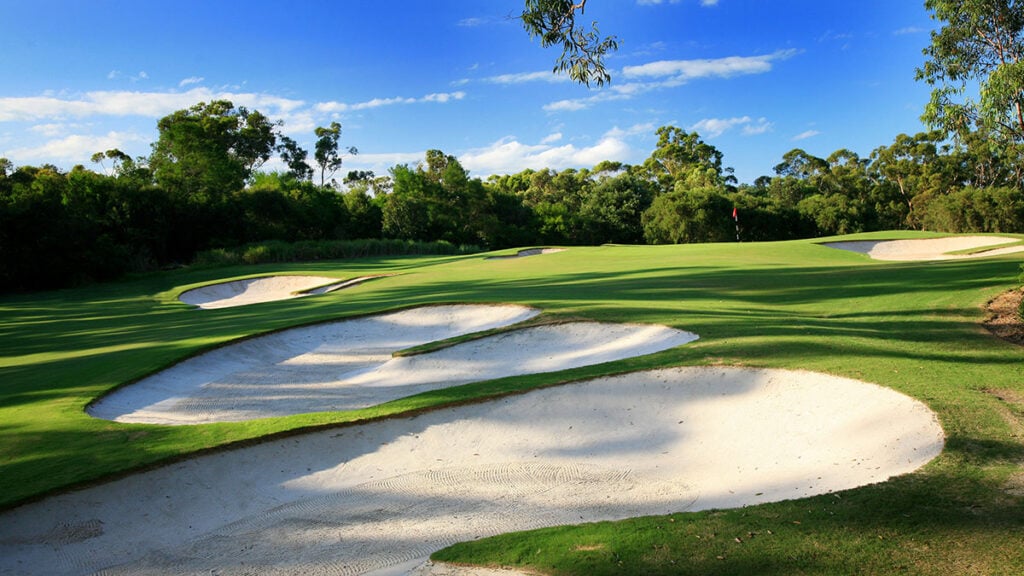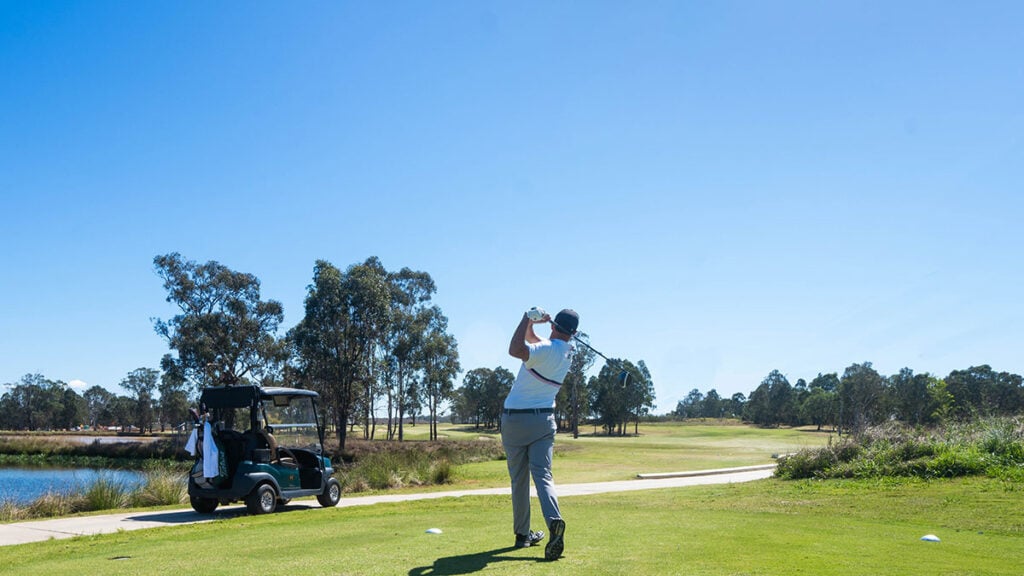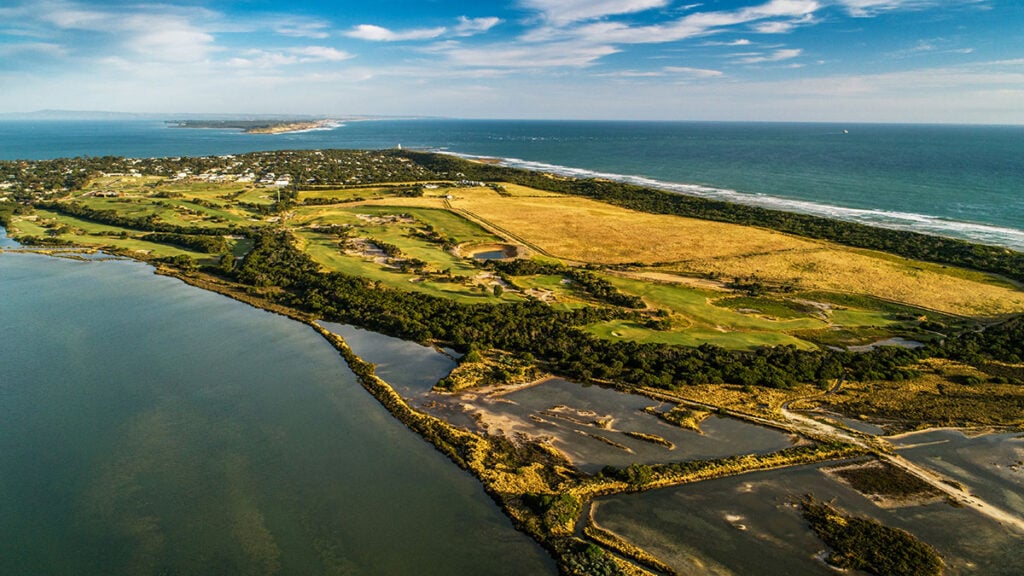Let’s call it the Trevor Chappell Syndrome.
In order to get any recognition in a family that included brothers Ian and Greg, he had to do something out of the ordinary. In the case of the Bellarine Peninsula’s status as one of the best golf destinations in the country, the 2011 Surf Coast Knockout at The Sands Torquay first raised its profile. In more recent years the growth of the co-ed Victorian Open at 13th Beach Golf Links – which in 2019 will be co-sanctioned with the European Tour – has shone the spotlight.
It may sit in the shadows of the Melbourne Sandbelt and Mornington Peninsula within the state of Victoria, but the Bellarine deserves its status as one of the finest golf destinations in Australia. If you point the car towards the Great Ocean Road upon your arrival at Melbourne’s Tullamarine Airport, starting with Sanctuary Lakes you can encounter no fewer than six layouts currently ranked in the Top 100 Courses in the country before you reach Port Fairy. There are classic gems, modern masterpieces from acclaimed course designers and regional wonders just waiting to be discovered.
We thought it was time that the Bellarine received due credit for the golf offerings found within and invited a group of our judges on a Top 100 Courses tour of the Bellarine Peninsula and beyond. Here is their verdict on what makes a trip to the Bellarine so special.
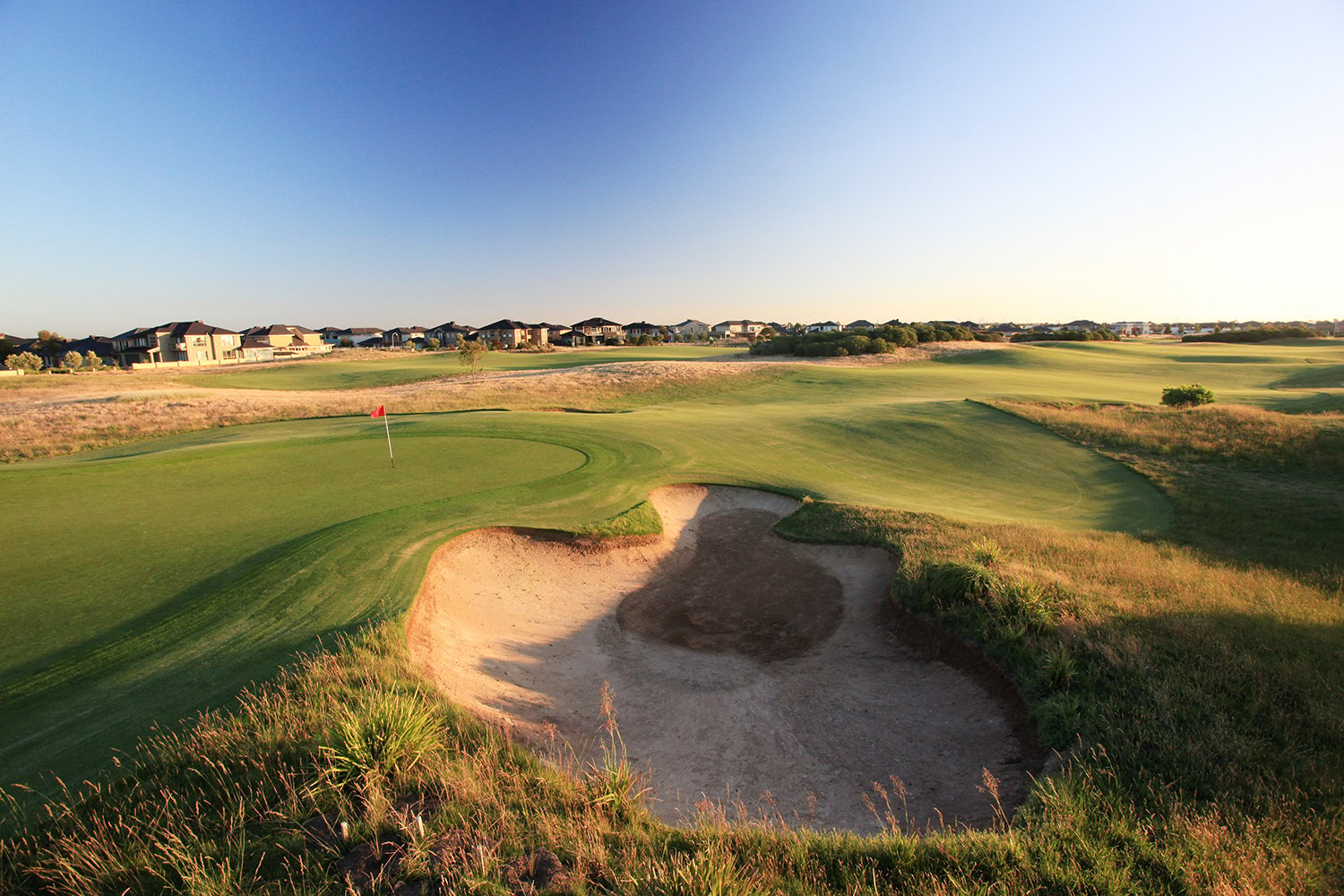
Start Your Tour In Sanctuary
Unless you take the nautical route across Port Phillip Bay, a tour of the Bellarine will first entail that you drive past Sanctuary Lakes at Point Cook, and it is a slight detour well worth making.
Once described by Greg Norman’s former design associate Bob Harrison as their greatest achievement in course design given the horrible nature of the site they had to work with, Sanctuary Lakes is now an entrenched member of our ranking of the country’s Top 100 Courses. Coming in at 82nd position in our most recent ranking in March, Sanctuary Lakes has been as high as 66 and builds to an exciting crescendo over the course of its 18 holes.
The 315-metre par-4 15th will punish inaccurate approach shots with a green well-protected by bunkers, the 523m 16th is the final par 5 and brings water into play for those who elect to lay up, and the wind and water down the left make the safe play at the 202m par-3 17th one down the right-hand side. But it is the 414m par-4 18th that is the showstopper. Devoid of fairway bunkers, the challenge is to pound your tee shot as far into the fairway as possible while being ever mindful of the lake that flanks the left. A long green provides the opportunity to land a long-iron approach and keep it on the putting surface, but any miss to the right will test the best of short games.
In terms of a warm-up to what lies ahead further down the Surf Coast, Sanctuary Lakes is the ideal place to get your game into gear.
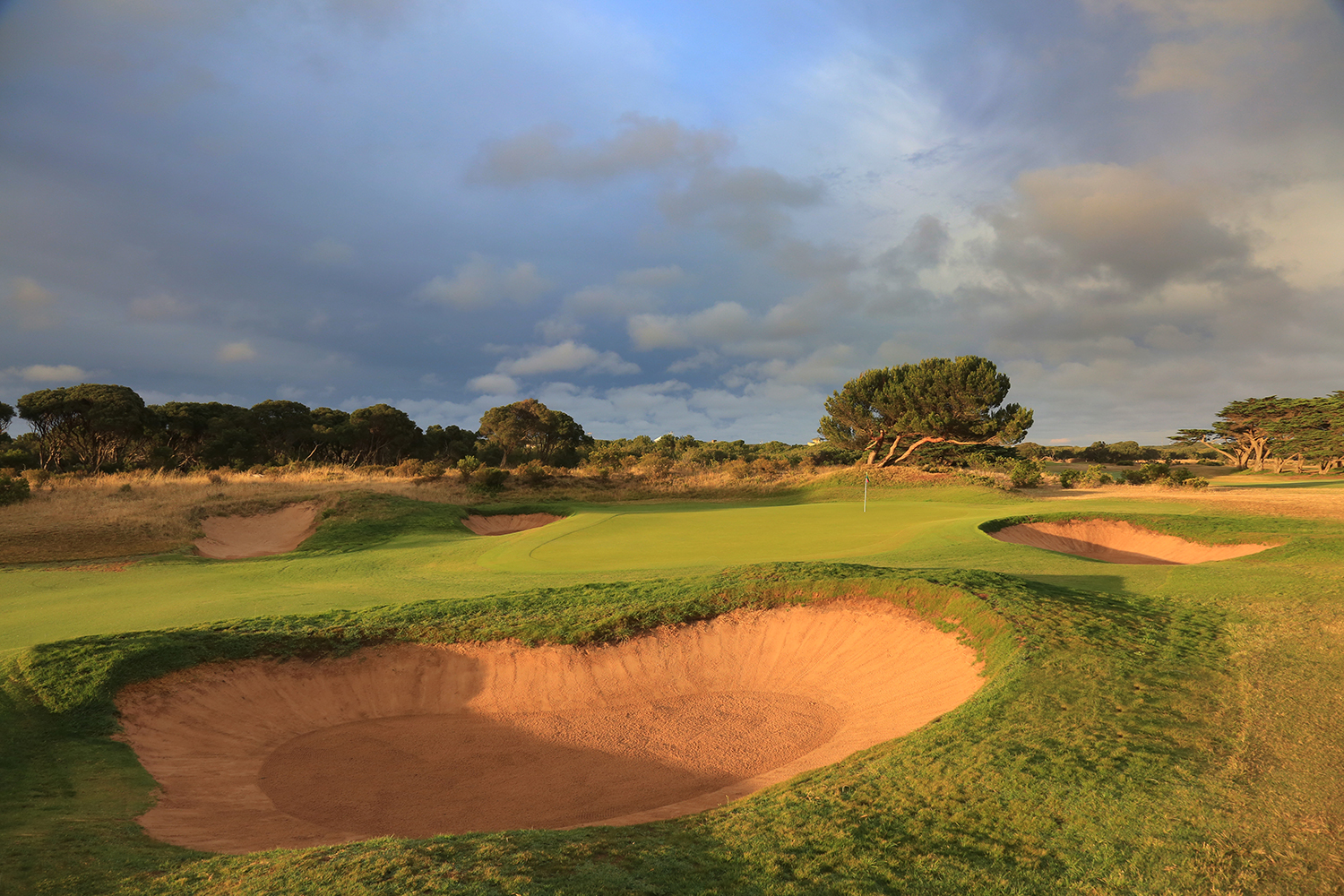
The Beauty of Barwon
The beauty is inherent at Barwon Heads. There are quirks and design features that are rarely found in modern course architecture but which are at the heart of the course’s character.
Consulting architects Neil Crafter and Paul Mogford should be lauded for the restraint they have exhibited in making subtle adjustments to the Barwon Heads layout without leaving obvious fingerprints all over the superbly manicured turf. The collection of par 3s is among the most interesting and exciting to be found and there are three sublime one-shotters – the fourth, eighth and 13th – without a single bunker between them.
In conditions so good they are rarely seen in this part of the world, we played 18 holes on a Friday afternoon in less than four hours and revelled in playing golf that was imaginative, challenging and incredibly fun. At its core, Barwon Heads is golf nirvana.
“If I had to play one course again tomorrow, I’d say Barwon Heads,” was the conclusion of scratch marker Matt at the end of our odyssey. “Knowing what I know now having played it for the first time, thinking about how I would play some of those holes again at Barwon Heads, that would be a lot of fun.”
Added Richard, whose soaring ball flight would ordinarily be blown clear off the Bellarine: “It could be a monster in the wind. There’s plenty of room to hit your tee shots but you’ve got to be very accurate on a lot of those second shots.”
The charm of Barwon Heads extends beyond the golf course, with the on-course accommodation and practice of wearing jackets in the dining room celebrating golf’s traditions in a way that is reverential and not archaic.
“It’s natural yet it’s well cared for,” said Aaron, a club captain who has a penchant for leaving all niceties towards his playing partners back at the putting green. “Nothing’s out of place. It’s got the tradition with the clubhouse as well. It’s got a couple of quirky holes, such as hitting over a public road at seven; lots of shape to the holes. I really liked it.”
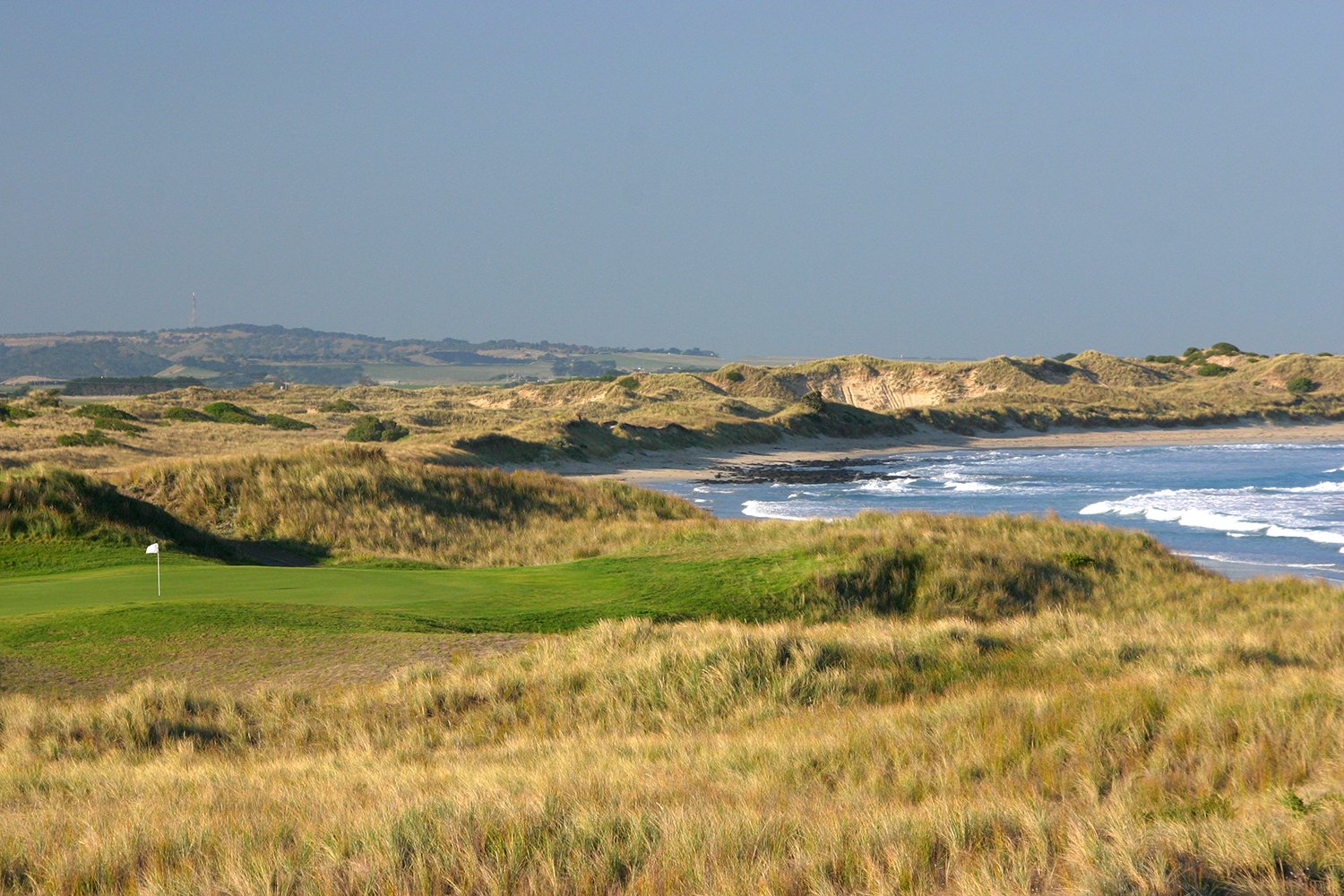
Blown away by Port Fairy
“If you can’t get to Barnbougle, then come here. That’s what I would tell someone.” With a clarity that defied our prior evening at the Victoria Hotel in downtown Port Fairy, John, a consultant who is as quick with an invoice as he is raking away two-foot gimmes, summed up the experience at Port Fairy Golf Links superbly.
Less than three hours south-west of Geelong, Port Fairy was the discovery of the trip and is set to climb even higher than its current position of 71st given the reaction of the Top 100 judges who made this particular trek. Drive six minutes out of the town centre and you are transported to the wild Scottish coastline and a course that has one breathtaking hole after another. In fact, such is the diversity in the holes and the open nature of the layout, courtesy of Mike Clayton’s extensive removal of ti-tree on the property, you regularly invent new holes to play. Walk off the second green and you picture playing a par 3 to what turns out is actually the 16th green, the gorgeous 304-metre par-4 third playing in the opposite direction. Standing on the seventh tee, we looked at flags both left and right before realising that the flickering flag peeking out from behind a dune was in fact our intended target.
Clayton and the OCCM team of Geoff Ogilvy, Mike Cocking and Ashley Mead remain the consulting architects at Port Fairy and Clayton believes the stretch of holes beginning with the roller-coaster par-4 14th is the equal of any collection of four consecutive holes in the country.
“The right-side of 14 was covered in ti-tree, which completely blocked out the view,” Clayton reveals. “It was still a good hole but they claimed they had the ti-tree as a wind block; I’m telling you, if it’s windy at Port Fairy nothing’s going to stop it.
“We moved the tee at 15 just off the back of the 14th green and closer to the beach and at 16 we cleared out a lot of vegetation that ran down the left. I also like 17, which has plenty of shape to it and is very typical of holes you find at other true links courses. There aren’t many courses in Australia that have a four-hole stretch that can match what is at Port Fairy.”
A burn that now runs in front of the 18th green is the first stage in strengthening the closing hole, but our judges found the course to be one pleasant surprise after another. “On the back nine in particular, you could see guys straining to see what was up ahead, and that’s always a pretty good sign,” said Richard, who claimed to deliberately knife a 9-iron to tap-in range at the sixth.
“It was great that no one had played it because we didn’t know what to expect,” added Matt, who also didn’t expect to hit a 5-iron 155 metres along the ground to make birdie at nine. “You just knew you were about to see something spectacular.”
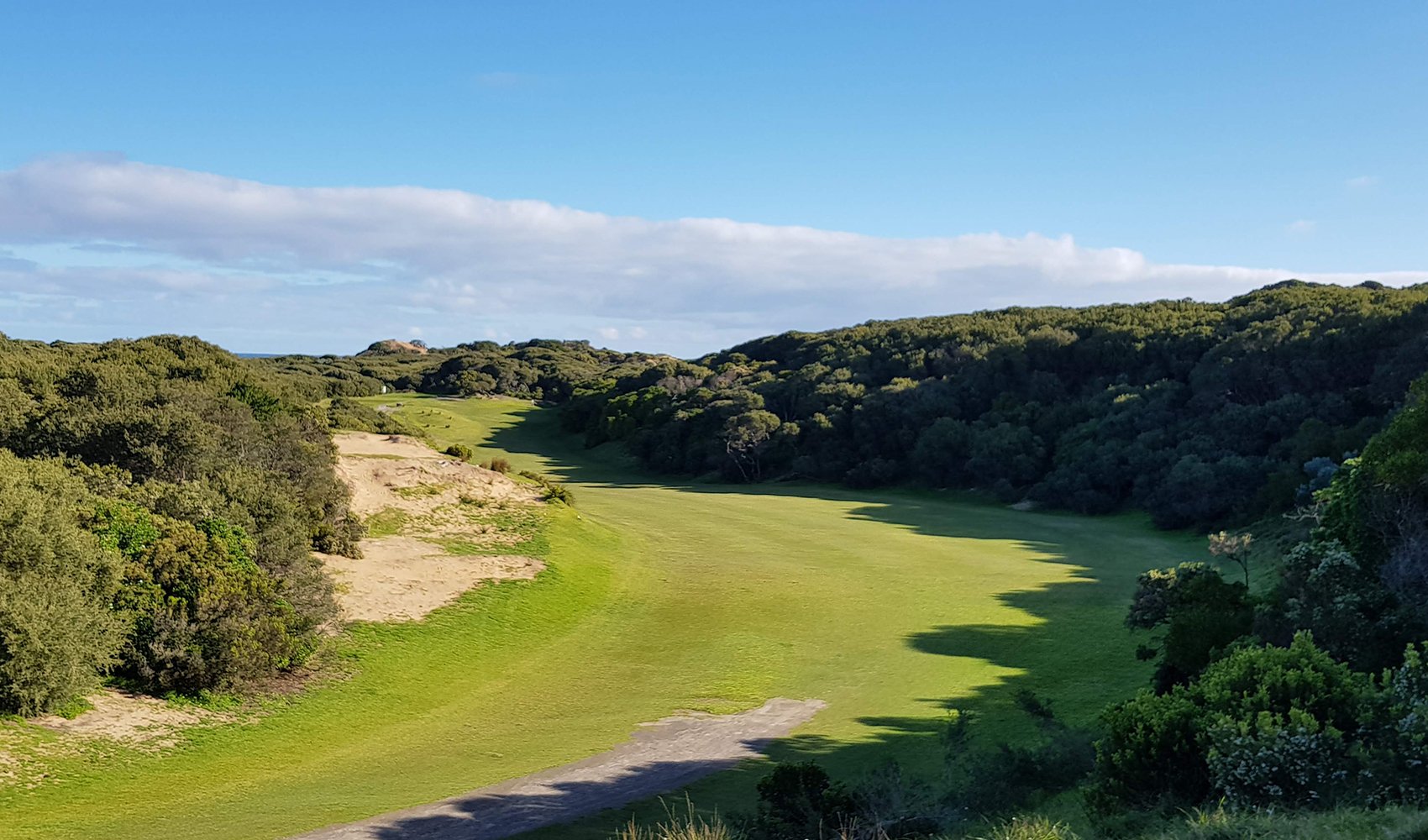
Take A Swing at Shipwreck Bend
Amen Corner. The Green Mile. The Bear Trap. Our very own ‘Bull Ring’ at Black Bull Golf Club on the Murray River. Golf loves bestowing a marketing gimmick on a memorable stretch of golf holes, but they only stick if the experience stacks up.
Move from the green at the par-4 third past the sign that reads ‘Welcome to Shipwreck Bend’ and it’s time to strap yourself in for a three-hole stretch that will make Warrnambool Golf Club live long in your memory. The sign that proclaims ‘Marc Leishman Drive’ as you arrive at the course makes it clear who Warrnambool’s most famous export is, but Shipwreck Bend is the magnet that brings golfers in.
The 311-metre fourth shapes from left to right around a massive dune and plays uphill and often into the teeth of the prevailing wind to a wide green, but it is the fifth that doubles down on the wow-factor. A hole that favours a right-to-left shot from an elevated tee, the fairway is a spectacular amphitheatre created by an enormous dune covered in vegetation all the way down the right side and then plays to a green perched in a nook of the dune. The final of the triumvirate is also no slouch, a 345m par 4 that cambers from left to right and that requires something of a draw to get right back into a green also butting up against the dunes.
“That collection of holes at Shipwreck Bend was sensational,” was Richard’s take and echoed by all of our group. “If you were a member here and played those holes four times in the space of a month they could play differently every time.”
While there are a few holes at Warrnambool that are replicated at any of a hundred regional layouts across the country, the dozen located on the south-west corner of the property elevate it to a standard that is rarely reached outside the capital cities.
“It would be a terrific home course,” said Matt, who navigated his way through Shipwreck Bend in one-under par. “I would love to have this as my home course because there are different ways of playing so many of those holes.”
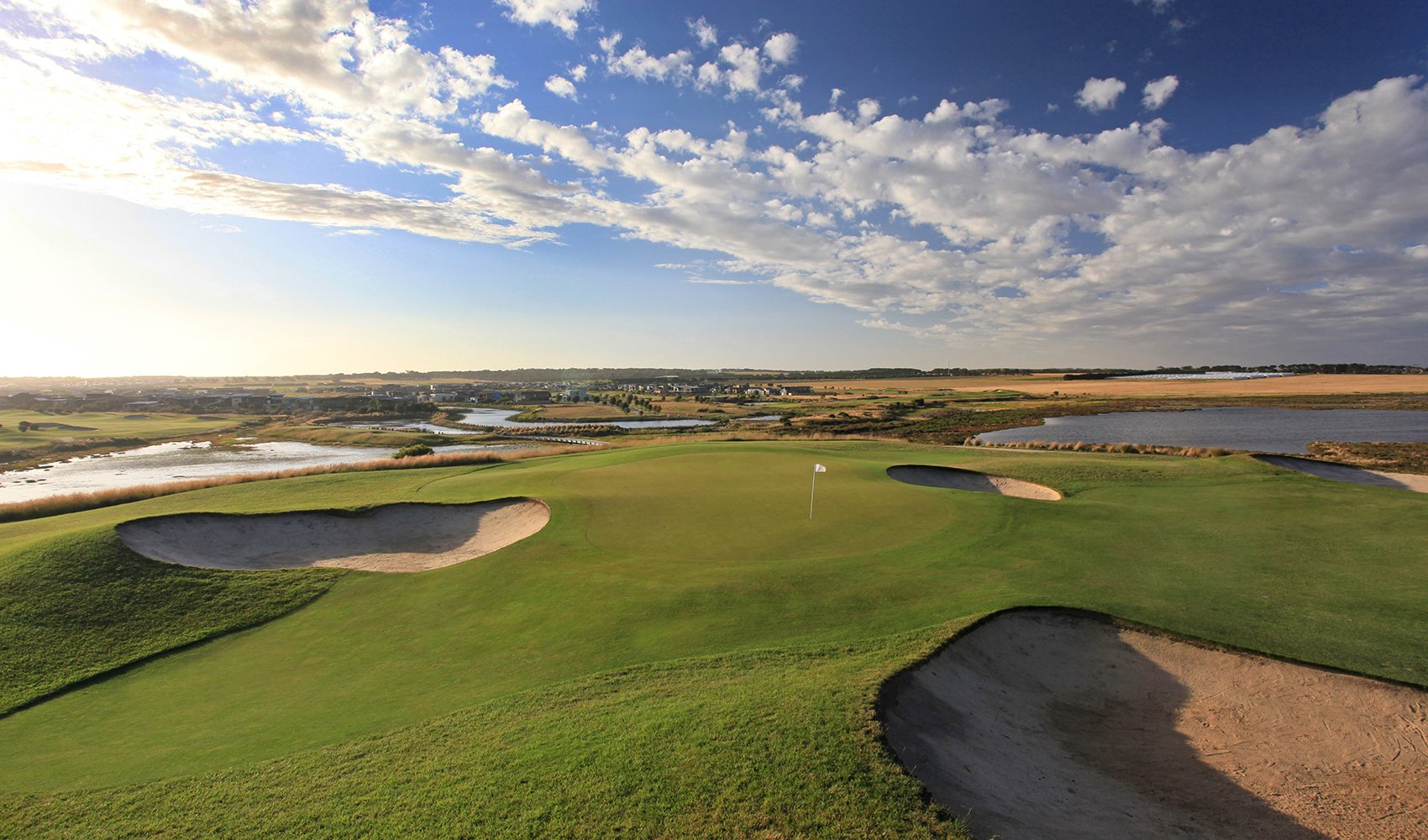
The Scenic Route
It’s a 243-kilometre stretch of road that attracts 1.7 million visitors each year and, for those with golf clubs in tow, represents a road trip like few others. Rivalling California’s Monterey Peninsula for an iconic tourist drive littered with world-class golf courses, the Great Ocean Road officially begins in Torquay, providing the opportunity to play twice before jumping in the car.
The Sands Torquay hosted the Surf Coast Knockout in 2011 and with on-course accommodation and a breathtaking back nine, it provides the perfect starting point. Since its opening the vegetation has grown to an extent that it masks much of the residential estate located throughout the opening nine holes, with the abundant bunkers – there are 109 – and deep rough pared back to enhance its playability for all levels of golfer.
RACV Torquay Golf Club in the centre of town also has its share of signature holes that butt up against the coastline, a right turn as you leave the clubhouse taking you directly onto the most famous stretch of bitumen in Australia.
Less than 20 minutes south of Torquay, the undulating kangaroo haven of Anglesea Golf Club awaits, a rollicking round of golf that will elicit comparisons with some of the famous courses on the Melbourne Sandbelt.
Renowned for its annual music festival and laidback vibe, Lorne is a further 30 minutes along followed by Apollo Bay another hour on. There you can enjoy the Great Ocean Walk, visit the Cape Otway Lightstation or simply indulge in the acclaimed seafood fare at Chris’s at Beacon Point.
The Twelve Apostles is a mandatory stop and if by that stage the golf bug is starting to itch again, the nine-hole Peterborough Golf Club with stunning ocean views is less than 30 minutes further on. From there it is another 45 minutes until the Great Ocean Road links with the Shipwreck Coast and the delights of Warrnambool and Port Fairy await.
Short and Sweet
Somewhere along the way golf became a sport associated with time and difficulty. It was never meant to be this way, and on the Bellarine Peninsula there are a wide variety of ways in which to engage in the game all with a sense of fun at their foundation.
If the 18-hole championship course isn’t enough, Barwon Heads boasts what just might be the most joyous nine-holer in the country. Our group of six played a two-man ambrose in less than hour with a maximum of three clubs each. We shared the course with a father and his son, a young man who had decided his girlfriend should get to know his parents while playing golf for the first time, and a foursome who apparently needed to settle whatever bets they had running on the full course at its adjacent baby brother.
The holes range in length from 71 to 114 metres, there’s not a bunker to be found and it took five holes before any of our pairings could complete a hole in less than par. Exquisite.
If your trip takes in the region’s epicentre, the redeveloped Geelong Golf Club and East Geelong Golf Club both offer interesting nine-hole options. One of the oldest clubs in Australia, the 18-hole Geelong Golf Club struck financial difficulties but was reborn as a nine-hole Graham Papworth design. Meanwhile, East Geelong offers unlimited golf for just $20 in its serene location nestled between Corio Bay and Geelong’s botanical gardens.
Curlewis is fast gaining a reputation as the most progressive and fun golf facility in Australia and it too caters for the time-poor at its newest addition, The Range. The driving range has automated tees, monitors that measure smash factor, AFL goal posts to aim at and lounges in which to relax. The 18-hole mini-golf course, designed by course architect Richard Chamberlain and the team at Mini Golf Creations, provides a golf experience the whole family can enjoy and there are more than 80 courses from around the world that you can play on the XGolf Simulators.
Down at Port Fairy, the Himalayas-type putting green built by Bruce Grant boasts two pot bunkers at the centre and humps, bumps and hollows that should be the starting point for all beginner golfers if we want them to love the game the way we do. If the wind is up and your game gone with it, give yourself the afternoon off and find a fun outlet for your golf.
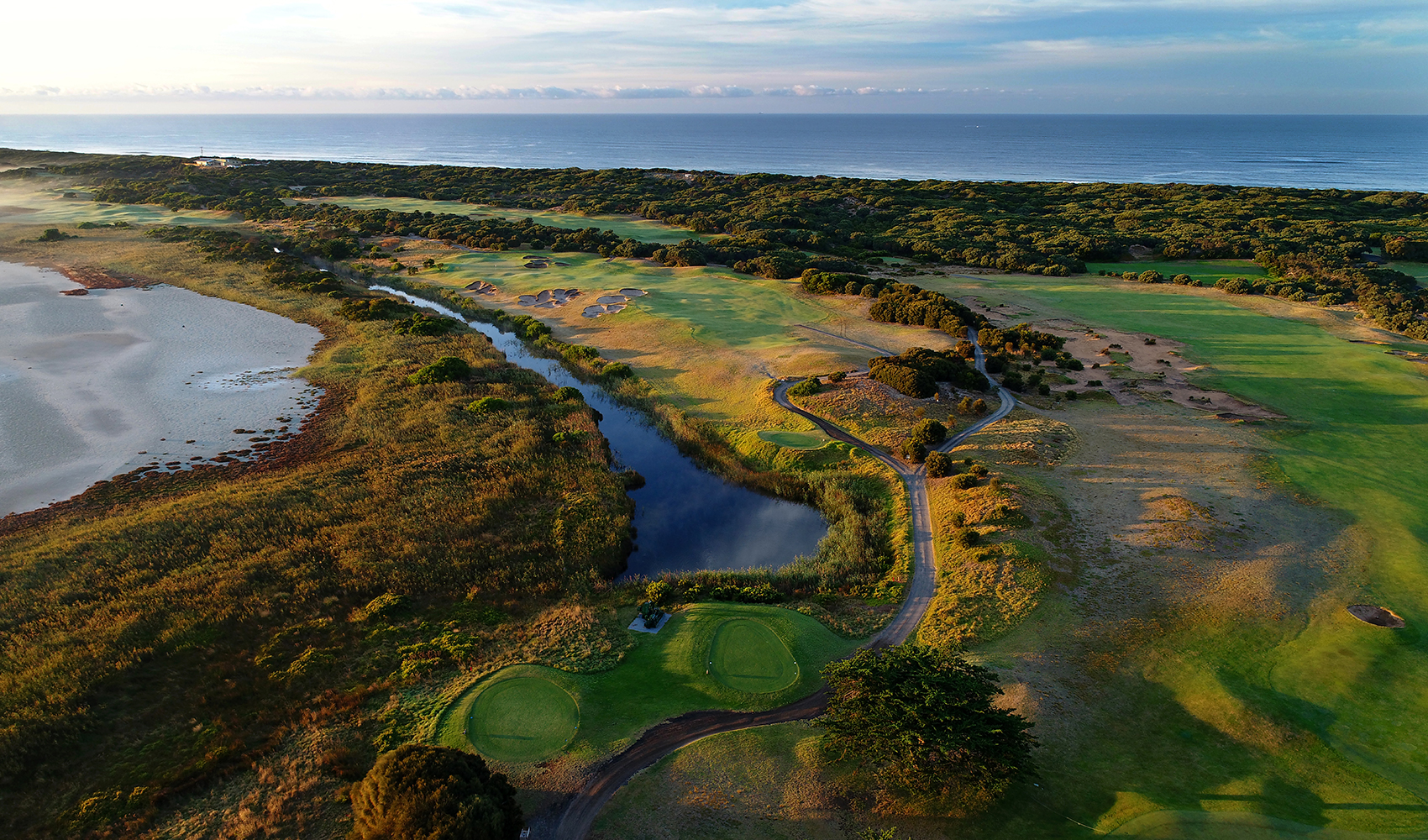
Equal Opportunity Golf
By hosting the men’s and women’s Victorian Open tournaments concurrently, 13th Beach Golf Links has shown itself to be an equal opportunity golf facility. That philosophy also stretches to the golf courses themselves.
The Tony Cashmore-designed Beach course has the luxury of playing through wild dunes to generate drama, but given the property’s exposure to the weather it was integral to build a second course that was playable in any conditions. Cashmore collaborated with six-time Major champion Nick Faldo on the Creek course and in terms of Slope Rating is actually considered more difficult than its more curvaceous sister course (138 compared to 134). Like us, the raters must have gotten it on a still day.
“It’s good that they are different in terms of playability,” offered Richard. “The Beach course in windy conditions is a really tough test of golf, the Creek is a little bit more forgiving.”
“The Beach course has something visually appealing on basically every hole, but there’s no question the Creek is more golfer-friendly to a wider degree of golfers. It’s a great combination to have,” added John.
That combination also allows 13th Beach to cater to its membership base and visitors in equal fashion, alternating member play and public access on the two courses each day.
News that next February’s Vic Open will now be co-sanctioned with the European Tour has added to the excitement already generated at 13th Beach, whose staff and members are ecstatic that some of the world’s best male and female players will grace their fairways. And you should be too.
The Beach course is a strategic masterpiece that offers myriad ways in which to play the longer holes and boasts par 3s as short as 104 metres – which is the case at the 16th, the scariest proposition imaginable with a wedge in your hand and even a breath of wind. But don’t discount the Creek as merely a back-up plan.
The fourth hole there doglegs to the left around a mound that offers reward for the brave while the fifth green sits in a natural bowl with a large mound giving protection to approaches played from the right. Sublime bunkering provides the challenge at the 290m par-4 ninth and the No.1 index 18th hole demands well-executed golf shots until the very end. With on-course accommodation and superbly appointed clubhouse, 13th Beach is a golf destination in its own right.
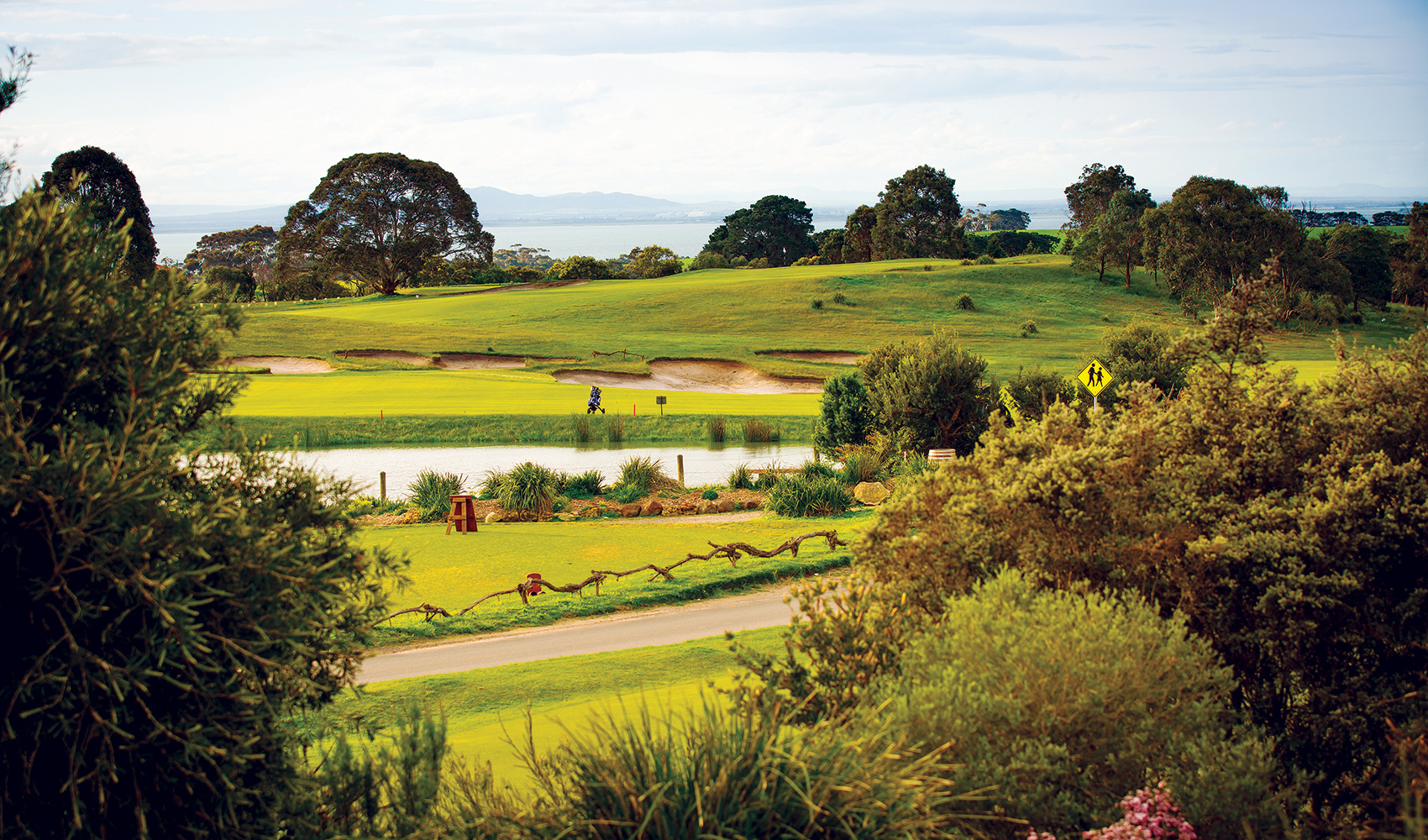
Sandbelt Style Of Curlewis
Given his father Mick built at Royal Melbourne what Alister MacKenzie imagined in his design philosophy, it should come as little surprise that the Vern Morcom design at Curlewis Golf Club carries some Melbourne Sandbelt hallmarks. The land formations across the front nine alone have the grandness of a Royal Melbourne and the shorter holes are devilish in nature.
“The third hole is a cracking short par 4,” says Clayton, who has had an association with Curlewis dating back to 2001. “If you put that hole at Kingston Heath or Royal Melbourne people would rave about it.”
There are more changes afoot, including on-course accommodation that will necessitate moving the ninth green and the first hole shortening from its current status as a 429-metre par 5 to an uphill par 4. A new road will in time require adjustments to the sixth and seventh holes.
The back nine lacks the same scale of land movement found on the front but has highlights of its own, opening with two par 4s that shape from right to left and a testing stretch of four holes to finish, starting with the 386m par-4 15th.
“On the front nine you had to try to create some shots similar to the other courses that we’ve played, whereas some of the holes on the back nine were a bit more benign,” suggested Matt.
But the course that made its Top 100 debut at No.77 this year is just part of what makes Curlewis great, its relaxed and inviting clubhouse now a place not just to enjoy a quick post-round drink but to settle in and linger over a long lunch and a bottle of wine.
Access All Areas
An intangible that makes any holiday one to remember is the welcome you receive upon arrival, and the golf courses on the Bellarine go out of their way to treat visitors as one of their own. Although the stately clubhouse gives the impression of old world stuffiness, Barwon Heads Golf Club has been accommodating golfers from far and wide in its 19 single or twin room configurations for almost 100 years. There are even reserved tee-times for house guests, who receive one round of golf in the accommodation package.
Given the tourism hub that is Torquay and the Peppers Resort on site, The Sands Torquay does an excellent job of treading the line between golf resort and member facility. The bar and restaurant are split into two distinct experiences and the outdoor seating and adjacent grassed area is a place where families can spread out in a relaxed setting.
Portarlington Golf Club proclaims to be the friendliest club on the Bellarine, evidenced by their offer to pick up prospective golfers straight off the Port Phillip Ferries service that operates out of Docklands in Melbourne. Once the holiday playground of a young Peter Thomson, Portarlington meanders left and right on a relatively flat piece of land before building to a strong finish that sees the closing four holes play around three separate bodies ofwater.
For just $45 midweek, it is typical of the value to be found throughout the Bellarine. You can play five current Top 100 Courses and get change out of $300 and other delights such as Warrnambool and The Sands Torquay are similarly well priced. Even those who don’t play golf are welcome at the region’s golf clubs, evidenced by Anglesea Golf Club conducting guided 30-minute kangaroo tours seven days a week to show off what many clubs consider to be a nuisance.
It’s a destination of quality and quantity and above all else will leave you wondering why you hadn’t discovered it sooner.
Where To Play
Barwon Heads Golf Club
Par 70, 5,591m
barwonheads.golf
Curlewis Golf Club
Par 72, 5,808m
curlewisgolf.com.au
Portarlington Golf Club
Par 72, 6,011m
portarlingtongolf.com.au
Port Fairy Golf Links
Par 72, 5,887m
portfairygolf.com.au
Sanctuary Lakes Golf Club
Par 72, 6,508m
sanctuarylakesclub.com.au
The Sands Torquay
Par 72, 6,575m
thesandstorquay.com
13th Beach Golf Club
Beach course: Par 72, 6,005m
Creek course: Par 72, 6,031m
13thbeachgolf.com
Warrnambool Golf Club
Par 72, 5,784m
wgcinc.com.au
Where to stay
Peppers The Sands Torquay
Barwon Heads Golf Club
Barwon Heads Resort at 13th Beach
The Victoria Apartments, Port Fairy
For more information on a Golfing Great head to Visit Victoria.

